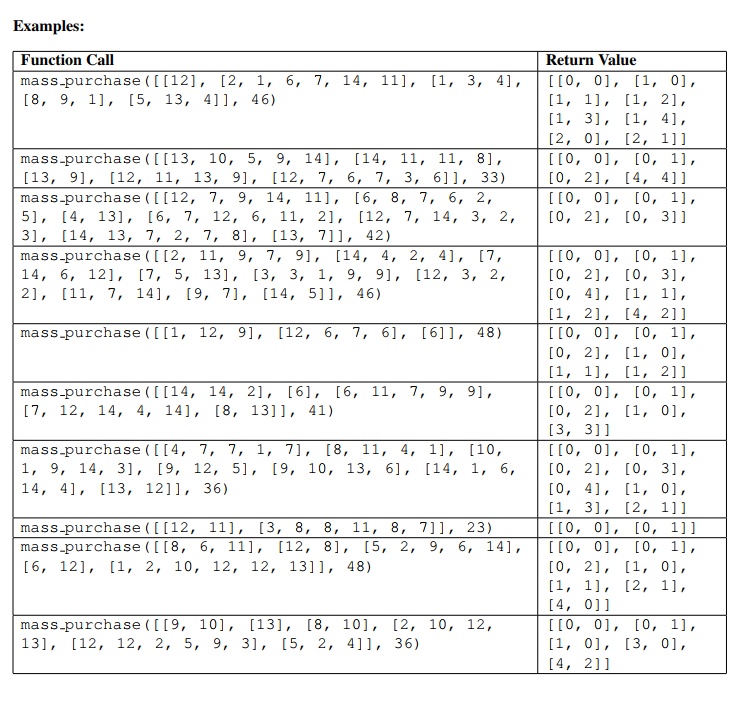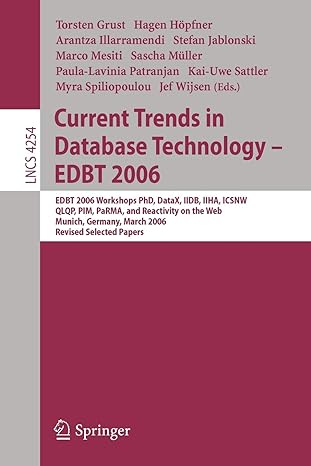Question
As a Real Estate Tycoon you are planning to purchase properties in different blocks around the city. However, there is a maximum number of properties
As a Real Estate Tycoon you are planning to purchase properties in different blocks around the city. However, there is a maximum number of properties you can buy based on your budget.
Write a function mass purchase() that takes arguments in the following order:
city: A list of lists of integers representing prices of properties. Each integer represents the price of a building in millions of dollars ($M).
budget: An integer that represents the maximum amount in dollars (in $M) you can spend on purchasing bulidings.
The function iterates over the list of lists, visiting the values in this order: city[0][0], city[0][1], city[0][2], ..., city[1][0], city[1][1], city[1][2], ... Note that it is not necessarily the case that every row (e.g., city[i]) has the same number of properties.
As the function visits each integer value, it adds the value to a running total, provided that doing so would not cause the total to exceed the budget. Adding an integer to the total therefore corresponds with purchasing a building. Each time a building is purchased, the indexes of that building in the list are appended to a list (lets call it result).
For example, suppose that the function decides to purchase the buildings city[0,2], city[1,0] and city[3,7]. The return value of the function (result) would be the list of lists [[0,2], [1,0], [3,7]].
Important: the buildings that are purchased must be added in the order specified in the previous paragraph.
Hint: use nested for-loops, where the outer loop iterates over the list city and the inner loop iterates over a sub-list of city (e.g., a particular city[i]).
Part of the code you will need to write is given below: result = [] for i in ________ : for j in ________ : if ________ : result.append([i, j])

Step by Step Solution
There are 3 Steps involved in it
Step: 1

Get Instant Access to Expert-Tailored Solutions
See step-by-step solutions with expert insights and AI powered tools for academic success
Step: 2

Step: 3

Ace Your Homework with AI
Get the answers you need in no time with our AI-driven, step-by-step assistance
Get Started


